No. This article is not about America. So it is an outlier. In truth, America lost that role decades ago. It lost it when it decided to embrace something other than it’s charter. The moment when the government stopped serving it’s people, it became something else. Nope. This is about China. Communist China to be exact.
What is put forth is going to anger many, but that’s to be expected.

We are in the midst of titanic changes and shifts on the global stage. These changes will be uncomfortable for some, but will open up amazing opportunities for others. It’s all going to boil down to an awareness of the way things really are, as opposed to what we are instructed to believe.
We look at things as they actually are.
Here, we address this issue. In fact, we address it with the largest and most successful nation in the history of the world; China. Not America.
The size of China’s displacement of the world balance is such that the world must find a new balance. It is not possible to pretend that this is just another big player. This is the biggest player in the history of the world. -Lee Kwan Yew.
China is the biggest player in the history of the world.
This narrative doesn’t fit the nonsense spewed out from the American media by any stretch of the imagination. Yet, it is the truth. American media serves a purpose; to control Americans. Not to inform.

In 2003 Godfree Roberts (Check out his site UNZ.com.) published a book charting America’s decline in thirty-six social and economic indicators. It’s a great read, but is out of date. Today, the decline is quite pronounced, and disturbing.
Back in 2003, he mailed copies to the Bush Administration, Congress and department heads. For all effort, he only received one reply. Only one singular reply. No one else even bothered to say “thanks for the book“. It was like talking to a brick wall.
The singular reply was from the Director General of the Central Intelligence Agency (CIA). He said that the Agency had been providing almost identical information to the government for decades. But no one, apparently was concerned. The administration at that time felt…
- The global New World Order was a good thing.
- America is strong and will always be strong.
- America can bend the rest of the world to fit it’s model of perfection. The CIA, NED and the rest can instigate proxy wars on anyone that steps out of line.
Since then our decline and China’s rise have both accelerated and momentum has carried us so far so quickly that today it is too late. Global competition against China (at this stage) is unrealistic. China is far too strong and far too capable. They are not a nation to trifle with.
Most of the rest of the world realizes this.
The BRI with its multiple proposed pillars extending beyond infrastructure development (including free trade, financial integration, people-to-people connections) appears to have the potential to transform the ever-challenging region between Europe and China. In this regard it is important to avoid confrontational ideology and focus on the areas of mutual interest (facilitating a non-discriminatory regulatory environment, the convergence of technical/SPS standards, greater cost efficiency and sustainability of investment projects), as well as avoid imposing ‘either-or’ choices on the countries along the New Silk Road. The long-run objective of facilitating peace and prosperity in the still problematic regions of Central Asia and the Middle East is in the common interest of China, the EAEU and the EU. - China’s Belt and Road Initiative: opportunity or threat?
We look at things as they actually are.
Reality vs. Illusion
Please kindly note that this post has multiple embedded videos. It is important to view them. If they fail to load, all you need to do is to reload your browser.
If China resembled the caricature our media has drawn for the last seven decades then yes, we can compete against her and be victorious. If they are a real joke… a real third-world shit-hole… and a population of dog-eating communists…well yes. Yes we can compete against her. Easy.
Easy peasy. Lemon squeezy.
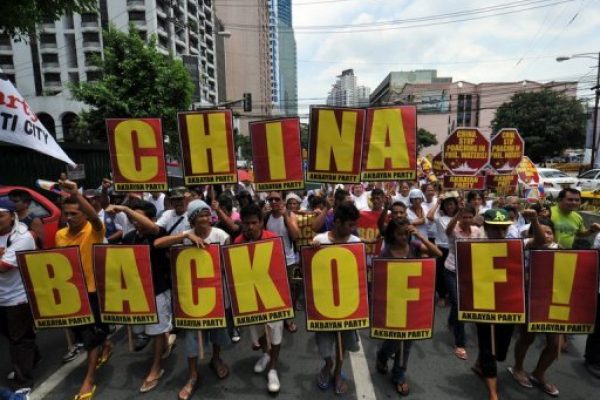
We could make an example of her.
We could show the world how American democracy can compete against China. China, that evil and backwards third-world shit-hole with her repressive, extractive, authoritarianism. And we could invest our bounty in advanced technologies to ensure that we remain the envy of the world.
We can show the world with our large fine and massive military, our state of the art aircraft carriers, and our space adventures where we capture a dishwasher-sized asteroid and put it in orbit about the moon.
- Barack Obama: Nasa must try to make Muslims ‘feel good …
- NASA To Focus On Muslim Outreach | Judicial Watch
- NASA’s Muslim Outreach | RealClearPolitics
- Hijacked! How Obama and the Left Killed NASA: The journey …
We can show off our state of the art health care, our humane treatment of illegals, and our fair and just government. We could show the world how talented, serious and no-nonsense our freely elected officials are. We could do all this and more.
We could show the world our network of high speed rail, our wonderful and cost effective medical care systems, and our institutes of higher learning that run on merit and produce the brightest and best that the world can offer.
But…
What if our assumptions are all wrong?
Think about it. What if the media is lying to us? What if FOX news lies just as bad as CNN? What then?
- What if China is neither repressive, extractive nor authoritarian?
- What if we have no bounty left to invest? What if it has been squandered by the generations before us and nothing much is left?
- What if Chinese leaders are more popular, respected and competent than ours?
- What if her economy is thirty percent bigger and growing three times faster, with one-third the debt burden?
- What if she is already ahead of us scientifically and technologically?
- What if she is militarily impregnable, with weapons or mass destruction that rivals (or are superior) to our own?
- What if China has and possesses more–and more powerful–allies than we do?
What should we do then? What could we do?
Think about this situation. Pause. Think. Look at the facts in a true and real context. Look at the world, the globe, as an ever changing organism with constantly moving lines of power and control. Look at what happens when nations, people, and systems grow and change. Look at China today.
Here’s an inventory:
Government
“If people have no faith in their rulers then the state cannot exist.” - Confucius
As an American, our trust in our government is at its lowest point in history. It is rock bottom, scraping and mired in the sludge at the very bottom of the barrel.
Gallup says most of us rank government as our most pressing problem. All that I can say to that is…”Duh!”.
- Trust Is Collapsing in America – The Atlantic
- Trust in government: 1958-2015 | Pew Research Center
- Americans Don’t Trust Their Institutions Anymore …
- Americans Have Little Confidence In Political Institutions …
- Why America has a trust problem – Verify, then trust
- America’s Trust Fall | Greater Good
- Americans Have Lost Trust in Government For Good Reason
- How Americans Lost Trust in Our Greatest Institutions …
- The Long Decline of Trust in Government, and Why That …
Although rated worse than any other institution in the country, federal lawmakers are not alone in facing mass disdain by a US electorate who increasingly thinks that the system has stopped working. - Poll: 80% of Americans Think Government, Banks, Corporate Media are Corrupt
So in America, the majority of people do not trust the government, the institutions that they represent and support, and the media that reports about their actions. Very precious few American people trust their government and their institutions.

America, by just about every indicator, is a nation that does not serve it’s people. The government functions within an isolated “bubble” much like France was before the French Revolution, or like Russia before the Communist Revolution. People know this, and do not trust the government.

Do you? Do you, dear reader, do you trust the American government? Do you believe them? Do you think that they have your best interests at heart?
If the government raised your taxes (again), would it end up improving your life? If they seized all your firearms, would you feel safer at night? If they banned something else, would you believe that your personal life was improved?
Most Americans would say no.

Don’t you think this is a problem?
Meanwhile, China’s system of professional, non-factional government has returned it to its traditional role as the Central Kingdom.
Compared to ours, China’s government is forward-looking, decentralized, efficient and thrifty.
For instance, the Government Entrance Examination selects the top 2% of graduates each year and success is the only avenue to power, responsibility.
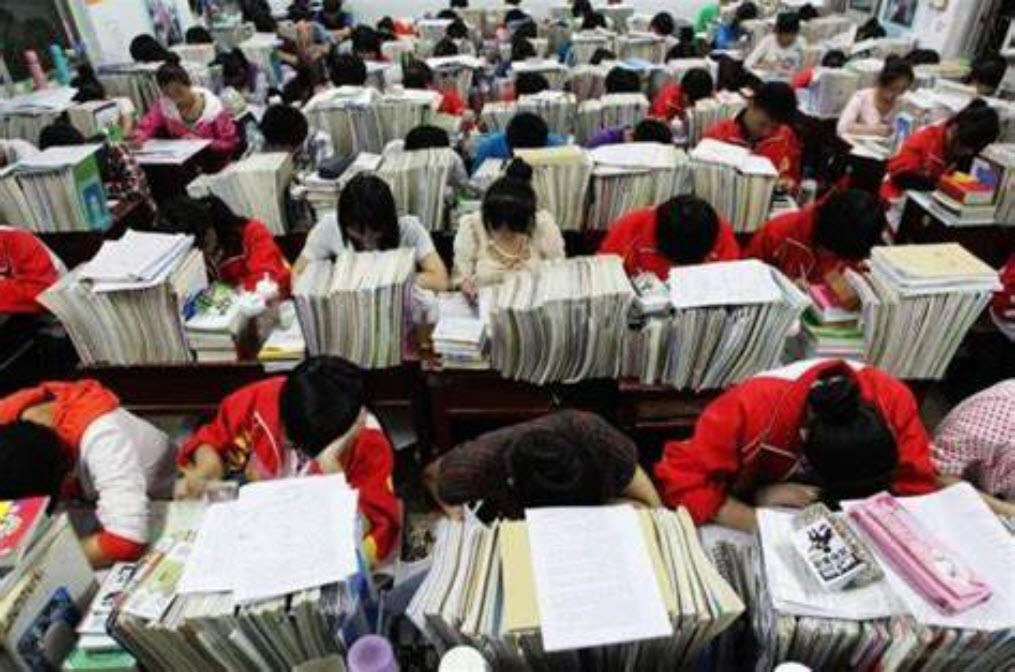
While in America it is completely different. In America it is well-promoted "blue bloods" (family dynasties) that are promoted and elected by mob rule through corporate media promotion.
The 200 members of the State Council, all promoted on their ability to work cooperatively, have collectively governed billions of people for a combined 5,000 years and their publicly available statistics are jaw-dropping.
- Most of the Chinese leadership in Beijing have a PhD.
- Most of the Chinese leadership in Beijing has an IQ over 140.
- All of the leadership began their careers in the country’s poorest villages.
- All of the Beijing leadership stayed in their home villages, and were only able to leave once they raised local incomes by 50%.
- They repeated that performance at every level, including the presidency, as Xi Peng is doing.
Most of the American government are members of a private club of "elites". They have an enormous bureaucracy that services them that are culled by ideology. American university and agency entrance exams have done away with placement though merit. In the interests of inclusion and diversity, positions are filled by "other criteria". It "improves" America, don't you know.
As a result, the people of China (contrary to the anti-Chinese propaganda in the American media) trust their government.
- Chinese people trust their government, media the most …
- Chinese trust in government ranked highest in the world …
- People in China trust their govt & media the most, global …
- Chinese trust government more than Americans do – …
- Chart: Where Trust In Government Is Highest and Lowest …
- The Countries That Trust Their Government Most And Least …
- The Chinese people’s trust in their government | East Asia …
- Local–national political trust patterns: Why China is an …
- Government for the People in China? – The Diplomat
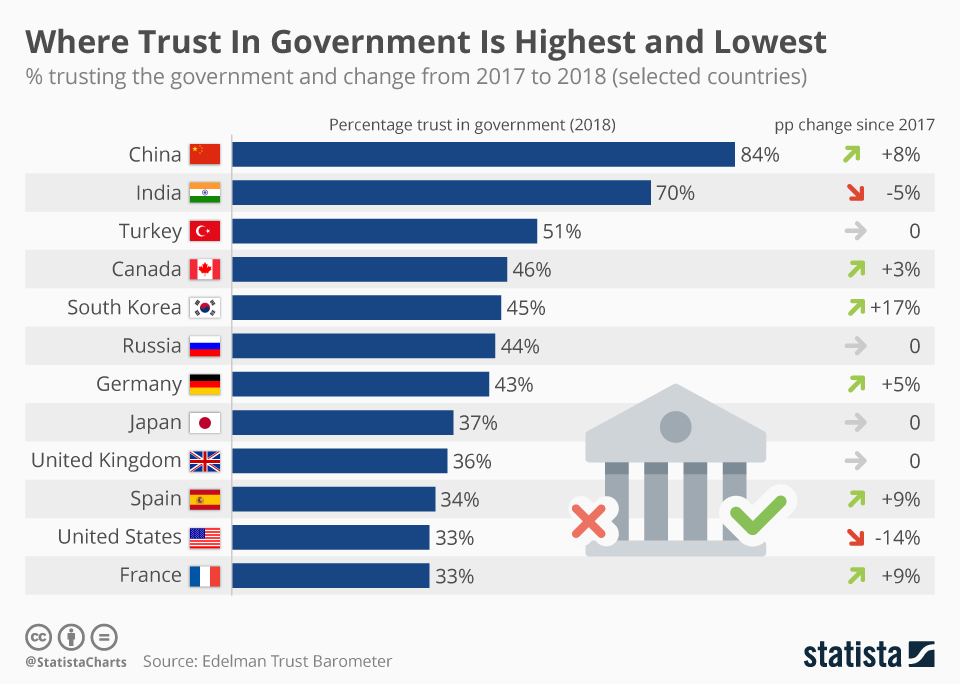
China is super patriotic, and who can blame them. Just about everyone is living light-years better than their parents did at their age.
Chinese people trust their government because they had bettered their lives for three generations. The people also have a bright future to look forward to. They know that peace and stability are essential to achieve what China has achieved and requires strong leadership to do this. They therefore like a strong leader and they see this in President Xi Jinping. They trust their government also because not only have they delivered but more importantly create an environment whereby they can improve their lives. The equal opportunity for everyone to raise their wealth and living standards are all there for people to witness. They are now ready to be self sufficient and not dependent on the US for export to improve their economy and the latter does not like it. The US is seen by the Chinese people as attempting to thwart their progress. This is spurring the Chinese people to unite behind their leaders and providing them with incentive to work harder and more innovatively to beat the US. - Louis Lim.
China is super patriotic. So most Americans need to forget the media-promoted illusion that the Chinese are ready to leap into the arms of “democracy”. It’s not the case, and is a big lie.
Leadership
In America, we choose leaders by acclamation–a Greco-Roman custom favoring eloquent rascals–and that is exactly what we have.
Rascals.
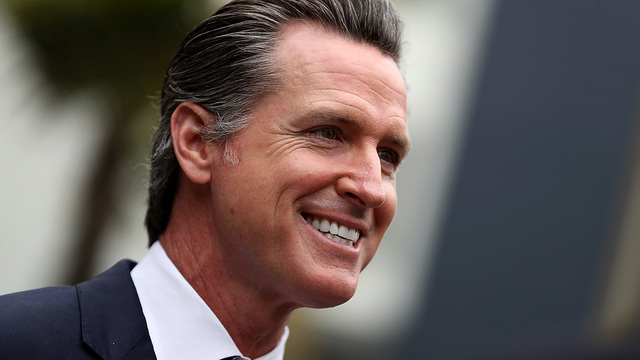
It’s so bad, and so outrageous, that they are no longer trying to hide their crimes. The rich, and powerful know that they can get away with things with impunity. They are no longer giving a care as to what others think.
Meanwhile, as President Trump observed…
“China’s leaders are much smarter than ours. It’s like taking the New England Patriots and Tom Brady and having them play your high school football team.”
While this is covered above, it should not be overlooked. The Chinese is a true merit-based society. The government is run by intelligent leadership. Not hand-puppets of the oligarchy. And while America has an enormous career bureaucracy, it is nowhere as talented or driven as the Chinese.
Nor are American leaders policed. For in China, all government officials are under observation by the “Corruption Police”.
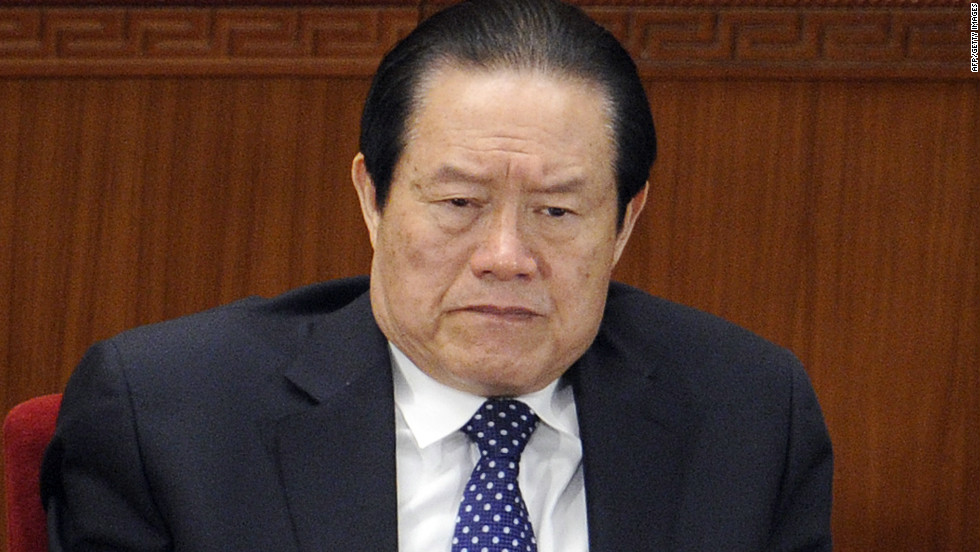
In America, the opposite is true. In Washington, it’s a free-for-all of corruption and abuse.
However, in China, all government officials, their aides, and support personnel are all under the careful watchful eyes of the “corruption police”. The Chinese do not want rampant corruption to reach the levels of 2004 in China, or what it is in America today. So they have taken aggressive and proactive steps to ensure that this will not happen.
- Top China aides ousted from Communist Party as anti-corruption drive intensifies
- Philippines arrests, hands over to China corruption fugitive
- China Corruption Report
- Corruption in China – Wikipedia
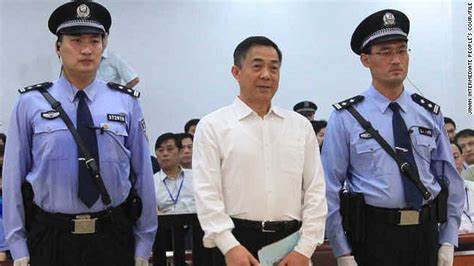
Given the high levels of corruption in the American government, one can really wonder American-based criticism of Chinese attempts at curbing corruption.
Since Donald Trump become President there has been exactly zero arrests, and zero prosecutions for the thousands of felonies committed in the last ten years. His DOJ head Jeff Sessions, did nothing. And the current Attorney General, Mr. Barr seems to be heading in the same direction.
Economies.
Today, China generates 20% of global GDP vs. our 15%, its imports and exports are in balance, its trading relationships are excellent, its currency fairly valued, its economy one third larger and growing three times faster, its manufacturing wages at parity with ours and its plans for 2025 are breathtaking.
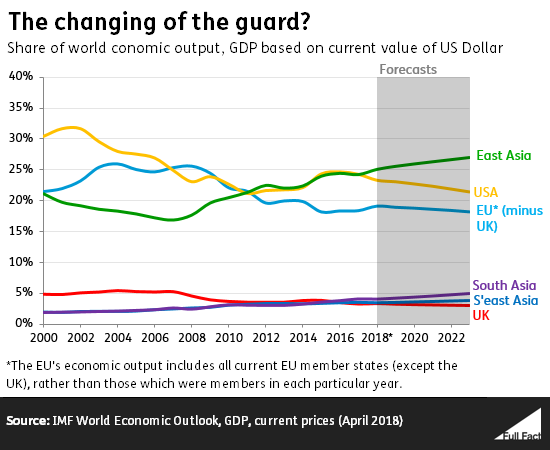
- United States – Share of global gross domestic product
- US GDP as % of World GDP – YCharts
- Infographic: Here’s How the Global GDP Is Divvied Up …
- The $74 Trillion Global Economy in One Chart
- Share of world GDP throughout history by Dave Drabble …
Infrastructure.
What is China? New highways, railways, subways and ports and, next year, the fastest, most advanced Internet and entire cities built around 5G. Meanwhile, 6G development is well in progress and there is a race on it’s development and implementation.
The infrastructure comparison is stark, and alerting.
What is America?
Not much. $77,000,000,000 for high speed rail, and all anyone has to show for it is an army of attorneys demanding more fees, fifteen miles of partially completed tracks and a cardboard mock-up.

China started it’s High Speed Rail plan at the same time as the United States did. Today it is everywhere and super convenient. In America it is no where to be found.
America can’t even build a simple fence on it’s border. I mean, don’t you know, that’s a purely dysfunctional government you all. (I turn my head and spit on the ground.) It’s all totally fucked up. It’s a train-wreck, and getting worse.
China, well, that bridge that connects Hong Kong to Zhuhai is an amazing civil construction feat that is beyond the abilities of Americans. Fact.
Geopolitics.
In 2018 China’s 34% world approval rating beat America’s 31% and Gallup says, “As the global balance of soft power continues to shift, it may prove even more difficult for the US to counter this influence.”
They are focusing their attention on Eurasia and, Zbigniew Brzezinski warned…
“Control over Eurasia would almost automatically entail Africa’s subordination, rendering the Western Hemisphere and Oceania (Australia) geopolitically peripheral to the world’s central continent. Seventy-five percent of the world’s people live in Eurasia and most of the world’s physical wealth is there too, both in its enterprises and underneath its soil. Eurasia accounts for about three-fourths of the world’s known energy resources.”
We ceded control of Crimea and the Black Sea to Russia and, increasingly, the Middle East, too.
With the Belt and Road, China and Russia are amalgamating numerous alignments.
- The Eurasian Economic Union.
(Armenia, Belarus, Kazakhstan, the Kyrgyz Republic and Russia with Tajikistan, Uzbekistan and Moldova in consideration)
- The Shanghai Cooperative Organization, SCO.
(Russia, Kazakhstan, Kyrgyzstan, Tajikistan, Uzbekistan, India, China, and Pakistan; with Afghanistan, Iran, Mongolia and Belarus as observers and Armenia, Azerbaijan, Cambodia, Nepal, Sri Lanka and Turkey as dialog partners)
- Regional Comprehensive Economic Partnership, RCEP.
(Brunei, Cambodia, Indonesia, Laos, Malaysia, Myanmar, the Philippines, Singapore, Thailand, Vietnam, China, Japan, India, South Korea, Australia and New Zealand).
Once the Nord Stream II and South Stream pipelines are completed in December, how can the EU resist joining them?
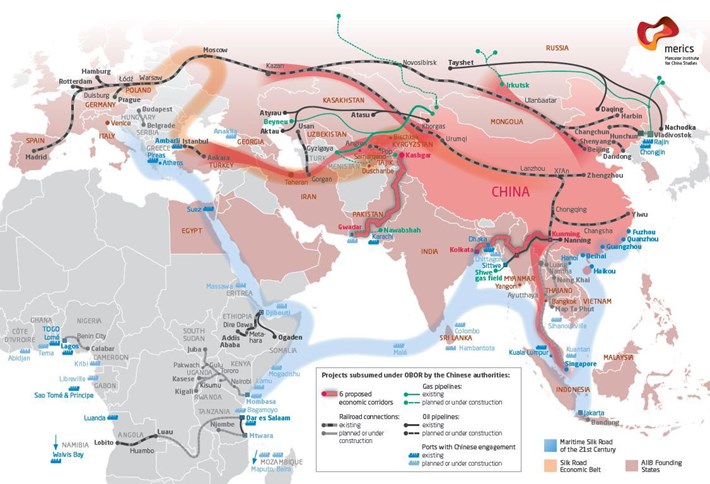
This plan, the Road and Belt Initiative, has been in the works for decades, and it’s implementation has taken years. It’s just another example of how China plans. They do so generationally – 25 years in advance. America plans by financial quarter – three months in advance.
China's Belt and Road Initiative (BRI) is not only the most ambitious and all-encompassing economic development project in the history of humanity but also the core of what is likely to be China's grand strategy for the twenty-first century. It aims to connect China and Europe in a web of roads, high-speed rail, power lines, ports, pipelines, fiber-optic lines and other infrastructure with the goal of stimulating growth in the scores of developing countries in between. New maritime trade corridors provide China with new shipping alternatives while offering its less developed western, northern and southwestern provinces easier access to new markets. While the initiative offers China great strategic and economic benefits it also offers hope to the struggling economies of Europe, Asia and Africa. Yet, despite the magnitude and promise of the initiative and its interface with almost every region in which the United States has strategic interests – the Middle East, South China Sea, India-Pakistan, Eastern Europe and Central Asia to name a few – Washington has largely ignored it, and in some cases it even took active measures to undermine it. - Dr. Gal Luft
After trying to derail it, the United States decided to create their own version. This United States version is loosely structured on providing funds in USD to member nations in exchange for their “loyalty” to the United States in a slew of areas. So far, as of November 2019, only Australia signed on.
- America’s Response to One Belt, One Road | ASP American …
- The American response to China’s Belt and Road Initiative …
- CNAS Commentary: Responding to China’s Belt and Road …
- US competes with China’s ‘Belt and Road Initiative’ with …
- One Belt, One Road, One Big Mistake – Foreign Policy
- What Does China’s Belt and Road Initiative Mean for US …
- China’s One Belt One Road Initiative: An American Response …
The Chinese Road and Belt Initiative will transform the globe in a better and stable way. It will surround China with growing nations with thriving middle classes that are economically tied to China.
Finances.
The Financial Times says,
“America will need to sell $12 Trillion of bonds in the coming decade. Who on earth–or in global finance–will buy this looming mountain of Treasuries, the US borrowing requirement even before Trump’s major upgrade of America’s weapons systems?"
Who is willing to buy one billion dollars in US bonds, let alone one trillion dollars worth? Who, which nation, can afford twelve trillion in bonds? Jupiter?
For reasons outside of fiscal responsibility, the United States government has been borrowing money for everyone on the planet. These borrowing needs [will all] eventually have to be financed in the context of already high global dollar debt exposure.

The reality is that at some point, sooner or later, we will have to pay back the money we’re borrowing. The longer we wait to do this, the more painful it will be to do so. The victims of all this are America’s youth. Peter Welch and his 189 cohorts in the House, his allies in the press, and anyone else who supports this fiscal insanity seem to have no moral problem sticking our children and grandchildren with a tab that will dramatically diminish our kids’ future standard of living. This is intergenerational theft. There’s nothing noble or courageous about it.
One of America’s biggest hedge funds privately concluded that in five years’ time the Treasury will need to sell bonds equivalent to 25 percent of gross domestic product, up from 15 per cent now.
This level of debt has occurred just twice in the past 120 years, first during the second world war and then again during the 2008 financial crisis”.

Russia and China have no foreign debt (only domestic debt), and at that, China has abundant savings and carries a debt burden one-third America’s or the EU’s.
Science.
Their natural genetic encoded ten IQ point advantage over Americans means that they have 600,000 people with 160 IQ, compared to only 30,000 in America.
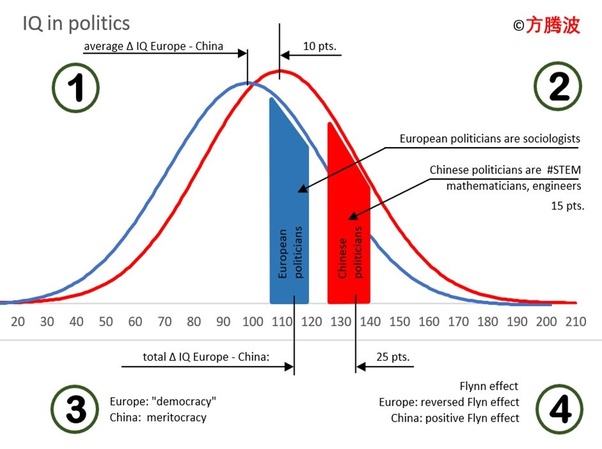
China has overtaken the US to become the world’s largest producer of scientific research papers, making up almost a fifth of the total global output, according to a major new report.
- Why is the average IQ in the People’s Republic of China much higher than in the USA or Europe?
- Why does China rank the highest in IQ tests? Is it because only a few were tested?
- Is it true that every province in China has a higher IQ than 100?
- Why China has a higher average iq than India?
- Why is China or the Chinese people (Han) so smart? The average IQ in China is 105.
- Why is the Chinese IQ ranking so high?
China dominates a global ranking of the most-cited research papers published in the 30 hottest technology fields.

Though the U.S. accounted for 3.9 million research papers overall compared with 2.9 million from China, the Asian country produced the largest share in 23 of the 30 fields that drew the most interest, while America took the crown for the remaining seven.
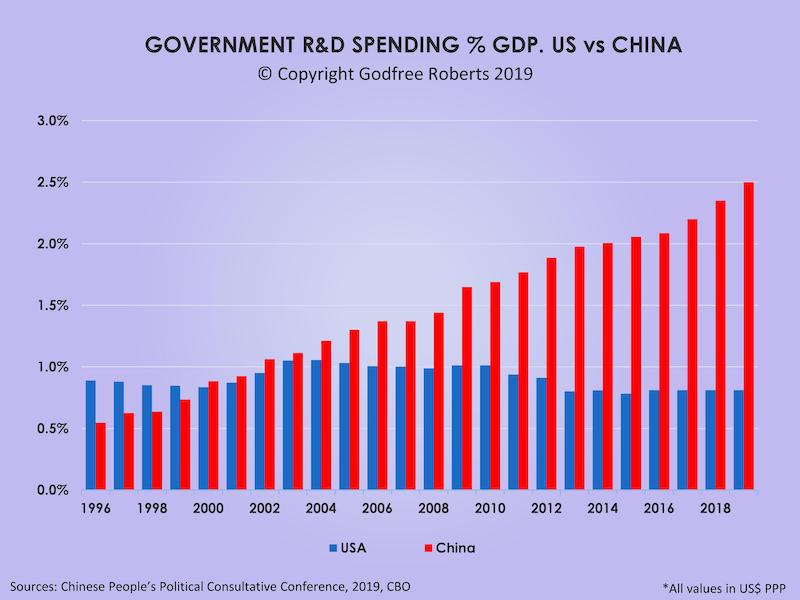
As we can infer from the chart, the social groups controlling our surplus used it for non-productive, ego-satisfying purposes which distributed the surpluses to consumption but did not provide more effective methods of production.
China is the most influential country in four of eight core scientific fields, ranking first in computer science, mathematics, materials science and engineering and is rapidly catching up in physics.
The U.S. led in physics, environmental and earth sciences, basic life science and clinical medicine. And each year, the USA lead drops far, far behind.
As impressive as all this is, let me underline a very significant point. After 12 to 16 hours of studying, the typical Chinese student will squeeze in a job, or labor to help with the family. Try to find an American student willing to put up with this kind of pace, or familial expectations.
Twenty years ago Samuel Huntington said,
“Civilizations grow because they have an instrument of expansion, a military, religious, political, or economic organization that accumulates surplus and invests it in productive innovations and they decline when they stop the application of surplus to new ways of doing things. In modern terms we say that the rate of investment decreases. This happens because the social groups controlling the surplus have a vested interest in using it for non-productive but ego-satisfying purposes which distribute the surpluses to consumption but do not provide more effective methods of production.”
To the rest of the world, Americans are seemingly looking more and more like a parody of idiocracy.“

Technology.
Two thirds of the world’s fastest computers are Chinese but nothing reveals the emptiness of our IP closet more than Chinese dominance of enhanced mobile broadband.
We will take twice as long and spend twice as much integrating a less affordable, functional, compatible, upgradeable system.
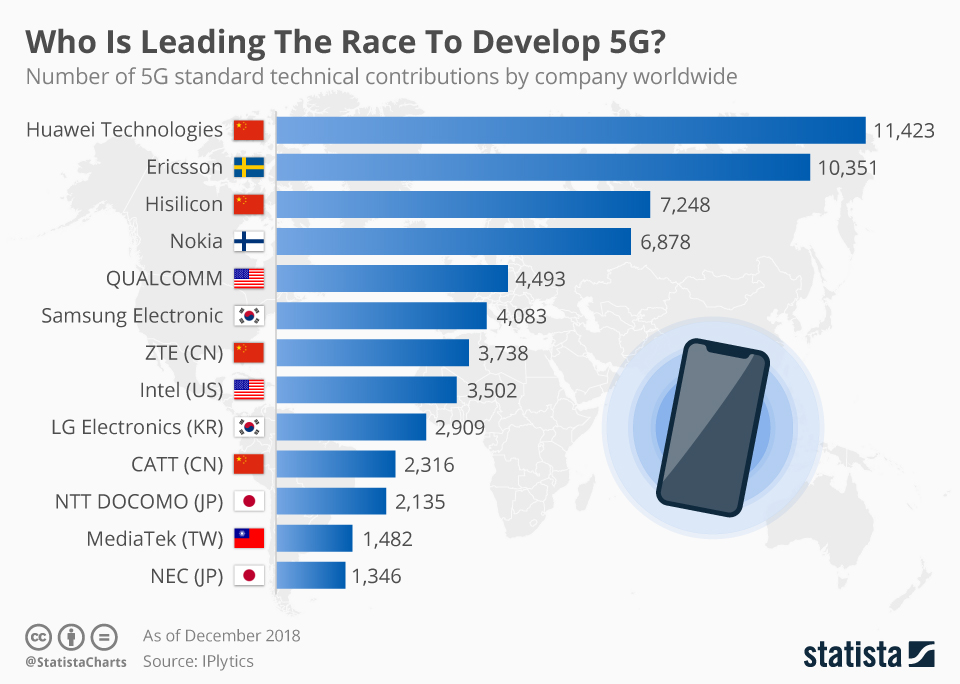
The benefits of 5G are faster download and upload speeds, and other measures of network efficiency like latency. These faster download and upload speeds will be essential for processing and moving large amounts of data for services like autonomous vehicles.
Huawei technologies, the Chinese tech company, has been aggressively pursuing 5G dominance, adding the most technical contributions to the 5G standard at international conferences where what 5G is and how it will be implemented is outlined. The company has added more than 11,000 technical contributions to the 5G standard. Swedish telecoms company, Ericsson, has added the second most to the standard, adding over 10,000 technical contributions.
Yet our feckless media derided President Trump when he called for America to dominate 6G, despite the publicly known fact that Huawei has had 600 mathematicians, physicists and engineers working on 6G for over a year.
- Why do Chinese political leaders have engineering degrees …
- Technological Competition and China | Center for Strategic …
- China wants to shape the global future of artificial …
- Science and technology in China – Wikipedia
- 7 Technologies Where China Has the U.S. Beat | GreenBiz
- Amazing examples of tech innovation in China | Techworld
- ChinaTechNews.com | The Technology Source for the Latest ..
- China’s rise as a major contributor to science and technology
China leads the world in most of the top ten ‘hot’ fields like battery research and accounted for more than seventy percent of all papers on photocatalysts and nucleic-acid-targeted cancer treatment, which ranked 12th and 14th.
The US led in three biotechnology fields, including #7 genome editing and #10 immunotherapy.
China leads the world in basic research and in most technologies, especially hot areas.
China also leads in all fields of…
- civil engineering
- sustainable and renewable energy
- manufacturing
- supercomputing
- speech recognition
- graphenics
- thorium power
- pebble bed reactors
- genomics
- thermal power
- ASW missiles
- drones
- in-orbit satellite refueling
- passive array radar
- metamaterials
- hyperspectral imaging
- nanotechnology
- UHV electricity transmission
- HSR
- speech recognition
- robotics
- radio-telescopy
- hypersonic weapons
- satellite quantum communications
- quantum secure direct communications
- quantum controls.
“Approximately 72% of the academic patent families published in QIT since 2012 have been from Chinese universities. US universities are a distant second with 12%.”
China will overtake the US in the most-cited 50% of Artificial Intelligence research papers this year, the top 10% of research papers next year, and the top 1% by 2025.
Six of the eleven AI unicorns are Chinese.
Unicorn (finance) A unicorn is a privately held startup company valued at over $1 billion. The term was coined in 2013 by venture capitalist Aileen Lee, choosing the mythical animal to represent the statistical rarity of such successful ventures. - Unicorn (finance) - Wikipedia
We have no entrants in quantum encryption or face recognition, nor 100 mph maglev subways, nor lossless power transmission. We are so far behind in those fields that it’s not even tying to begin with.
- Aerospace: China launched more space missions in 2018 than Russia or America and its first indigenous airliner will take to the air this year, despite FAA foot-dragging. It is the world’s leading provider of UAVs and the largest manufacturer and exporter of light combat aircraft. Now that its WS-15 fighter jet engine is in production, its J-20 will out-carry and out-speed our fighters.
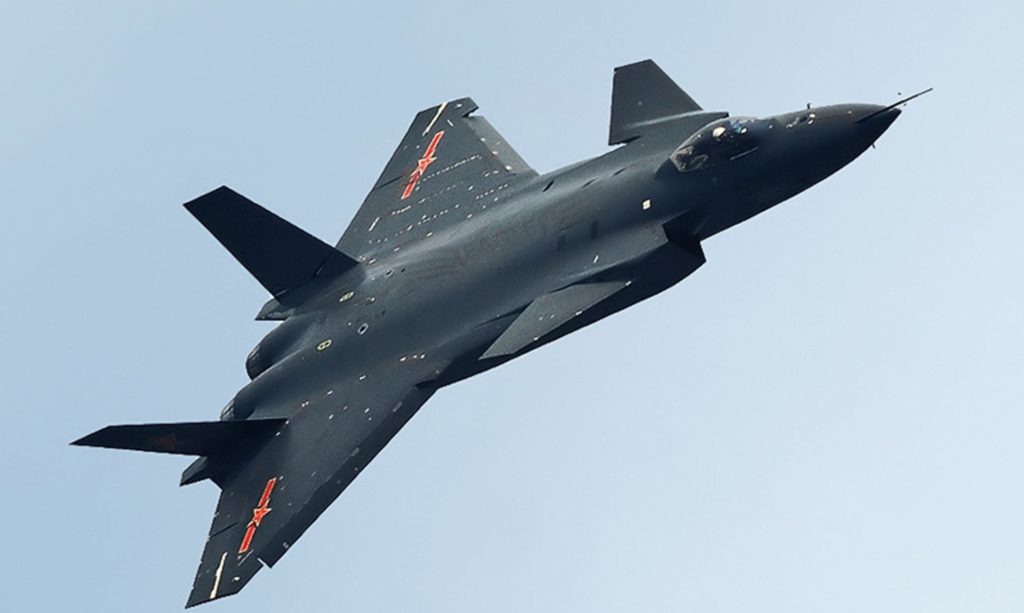
- Ocean engineering. China is the go-to builder for LNG transporters and naval vessels that require technical expertise (the USN approached it about building a floating dock) It designs, builds and operates the most powerful surface combatants afloat, the Type 55 cruiser, ensuring that its claims in the South China Sea and the East China Sea will not be contested.
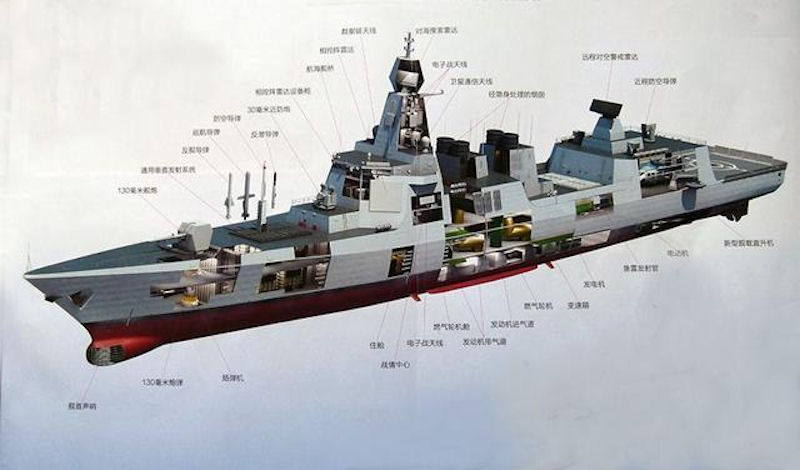
- Advanced railway equipment: China leads in all aspects of railway engineering and wins the bulk of global rail contracts. The first of five low speed maglev lines has completed testing and two more will open this year.
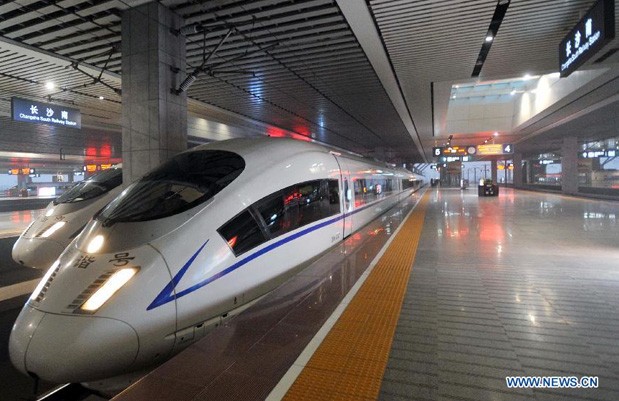
- Energy-saving and new energy vehicles: China leads the world in batteries and electric cars and has more than 20 manufacturers competing to survive.
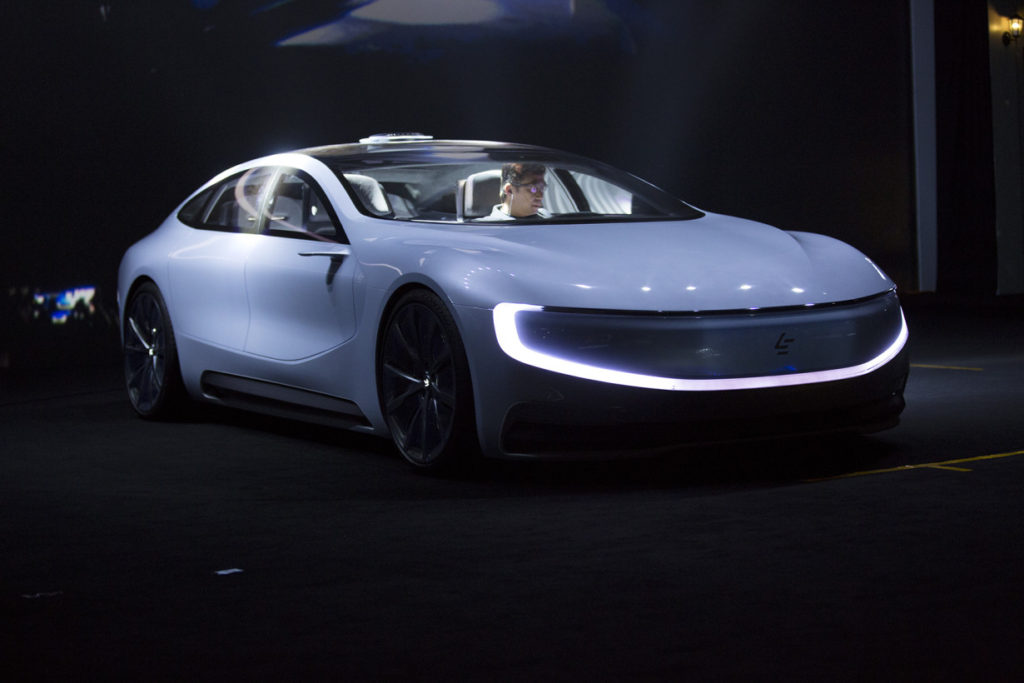
- Power equipment: China leads the world in basic research and manufacturing of renewable energy and nuclear energy and installed more renewable and nuclear power last year than the rest of the world combined. It owns the market for long distance UHV transmission.
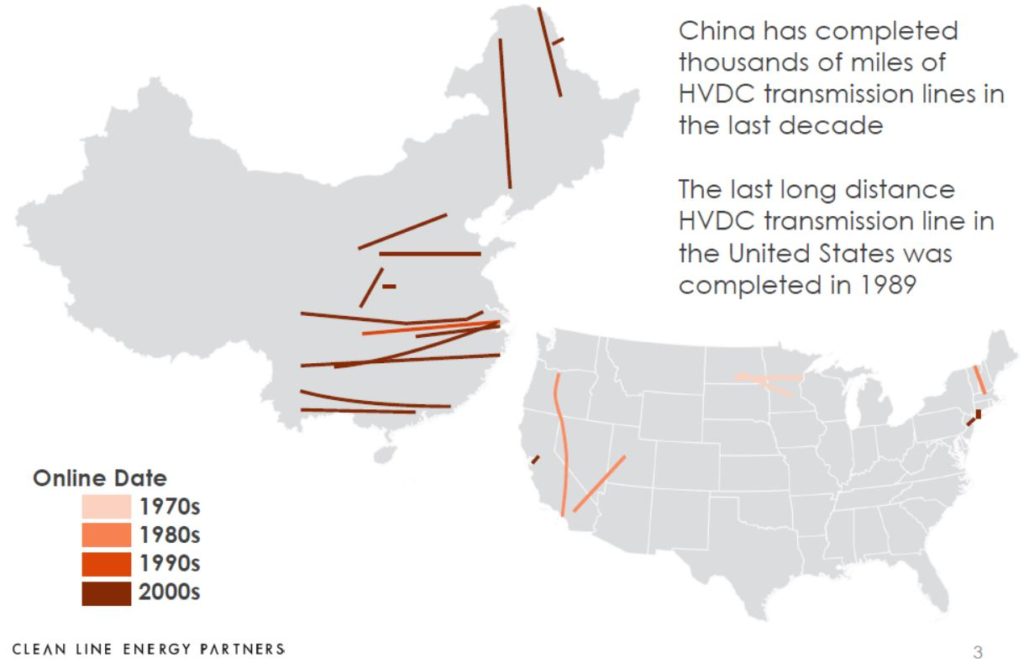
- MaterialsScience. China’s share of the most cited nanoscience papers grows 22% annually and overtook the US in 2014. Its contribution–in quantity and quality–is now greater than the rest of the world’s combined. Most of the world’s graphene is manufactured in China, home to most graphene startups and the country is even with us in nanomaterial development.
China Creates LiFi Nanomaterial to Replace WiFi | News ... Chinese scientists develop nanomaterial to remove diesel ... Chinese scientists find nanomaterial could reduce lead ... Chinese scientists develop new material for treatment of ... Titanium-Dioxide Nanomaterial Market Insights 2019, Global ...
- Biomedicine and high-performance medical devices. Judged by papers in 82 high-quality research journals, China is the second leading contributor to biomedical engineering articles after the US and will overtake us in three years.
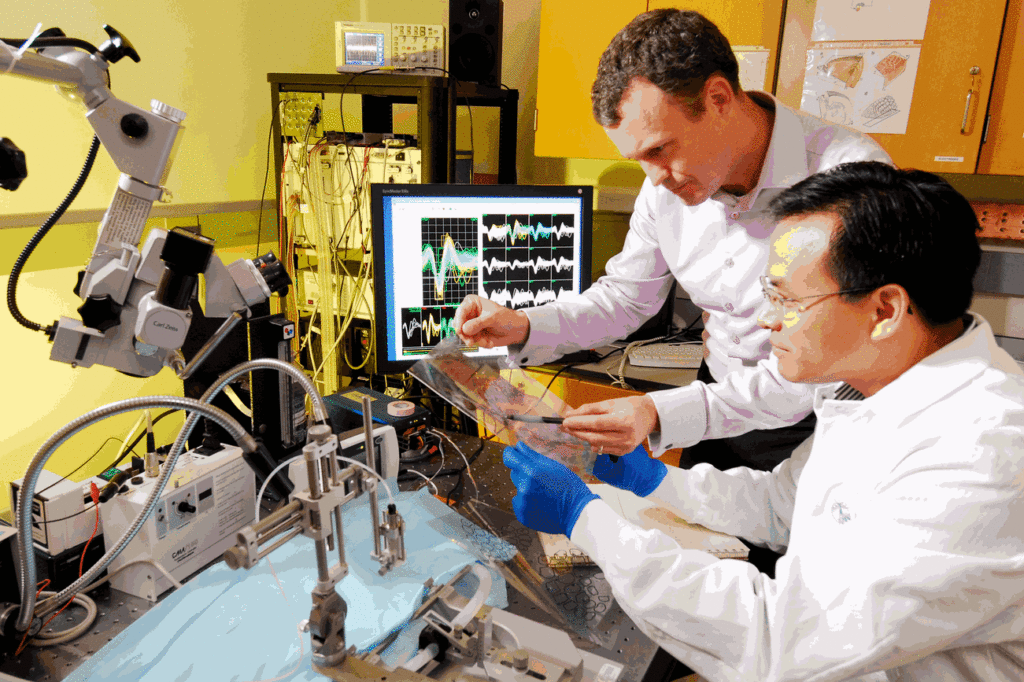
Among recent breakthroughs, researchers at the Chinese Academy of Sciences (CAS) have genetically modified cynomolgus monkeys so they exhibit autistic-like behaviours, to better understand what causes the disorder, and how to treat it. CAS scientists have also cloned primates using a technique similar to the one that produced Dolly the sheep. Bezard has used rhesus monkeys to show how brain–computer interfaces can restore leg movement after spinal cord injury. These developments have coincided with improvements in the regulation and enforcement of international standards in the biosciences in China.
Two events were critical to the process: the 2003 SARS outbreak, which put a spotlight on the issue of wildlife and lab animal management, and the creation in China of the world’s first human–rabbit embryos in 2001, which provoked an international public relations crisis for the country.
The Chinese government recognizes that bioscience will play a major role in its global competitiveness. Biomedicine, synthetic biology and regenerative medical techniques are listed as strategic fields and industries in China’s 13th Five-Year Plan. “China doesn’t want to miss the life-science biotech revolution,” says Cao Cong, an innovation studies researcher at the University of Nottingham Ningbo China.
Trade.
Midway in the sixteenth century China became the great repository of the early modern world’s newly discovered wealth in silver. Long a participant in international maritime trade, China experienced the consequences of the greatly enlarged patterns in world trade. In that commerce China was essentially a seller of high-quality craft manufactures. Other countries could not compete either in quality or price. The colonies of the New World and the entire Mediterranean sphere of trade, from Portugal and Spain to the Ottoman Empire, began to complain that the influx of Chinese goods undermined their economies. -F.W. Mote
China’s most significant trade relationships are with Asia and Europe, with the US third.
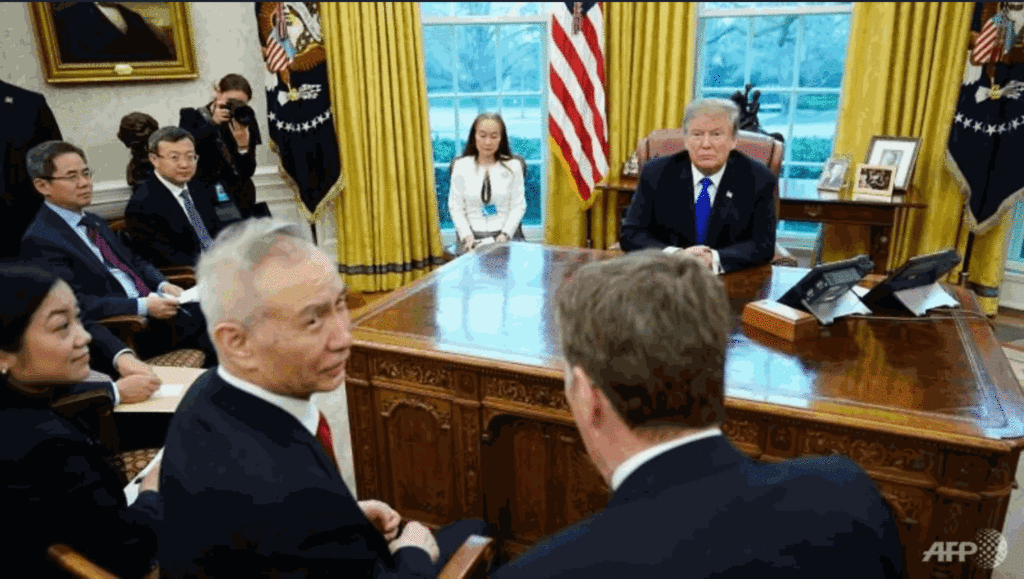
As Parag Khanna says…
"Beijing must wonder why #3 would launch a trade war against #1. Though we are self-sufficient in many things,we may be more dispensable than we imagine. ‘America first’ sounds great except when it actually means ‘America alone’."
China has a multi-generational plan for on-going trade with the rest of the world. As discussed previously, the first step is the “Road and Belt Initative”, but other systems are slowly being put in place.
Meanwhile, the 2016 to 2019 “Trump Trade War” between the United States and China, has proven, beyond a doubt that the United States is NOT a stable trading partner, and other trading partnerships need to be developed.
- The New Tariffs Against Mexico Signal the U.S. Isn’t a Reliable Negotiating Partner
- The Upshot: US is not a reliable trade partner
- China is establishing an ‘unreliable entities’ list that …
- China ‘not afraid’ of trade war with Trump | Financial Times
- Opinion | America the Cowardly Bully – The New York Times
Social Indicators.
China’s GINI, which never reached our nosebleed levels, is dropping like a stone and extreme poverty will be gone next year, when every Chinese will have a home, a job, plenty of food, education, safe streets, health and old age care.
The Gini index measures the area between the Lorenz curve and a hypothetical line of absolute equality, expressed as a percentage of the maximum area under the line. Thus a Gini index of 0 represents perfect equality, while an index of 100 implies perfect inequality. - China GINI index, 2017-2018 - knoema.com
When this happens there will then be more drug addicts, suicides and executions, more homeless, poor, hungry and imprisoned people in America than in China.
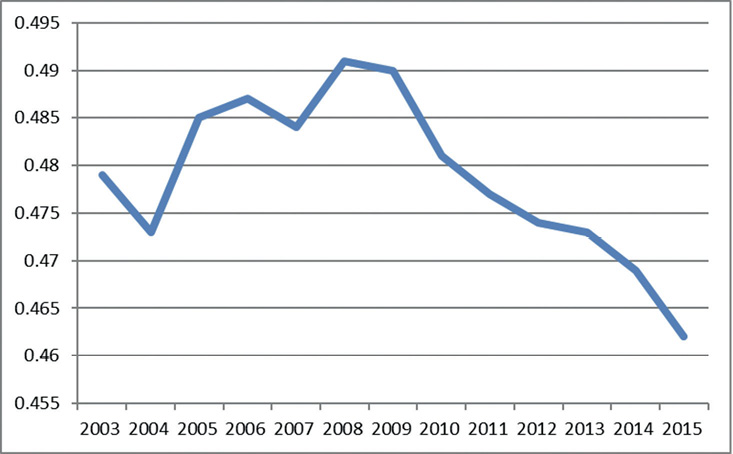
500,000,000 urban Chinese will have more net worth and disposable income than the average American, their mothers and infants will be less likely to die in childbirth, their children will graduate from high school three years ahead of–and outlive–our kids.
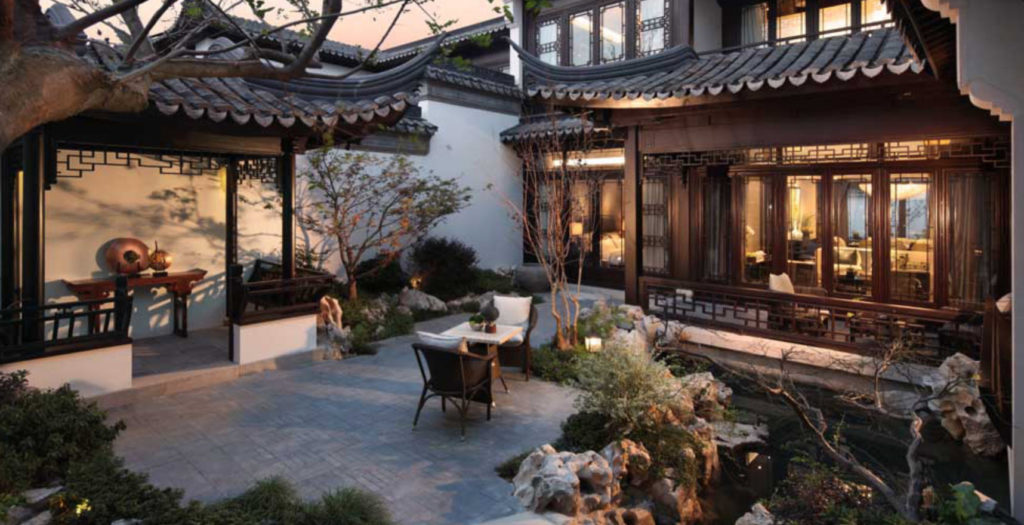
Ninety-eight percent of Chinese listed as ‘poor’ already own their homes (not “have mortgages”, they actually own the homes and the homes are paid off.) and Xi has scheduled 2021-2035 to bringing GINI below Finland’s.

Education.
No country has so many intelligent, well trained, devoted engineers.
One-fourth of the world’s STEM workers are Chinese, an intellectual workforce eight times larger, growing six times faster and graduating high school students three years ahead of ours.

By 2025, China will have more technologically skilled workers than the entire OECD–the US, EU, Canada, Mexico, Australia, Israel, Japan, Korea, New Zealand, and Turkey–combined.
The Chinese school system is merit based. You get zero points of diversity, economic hardship, or gender advantage. You succeed or fail. There are no easy outs.
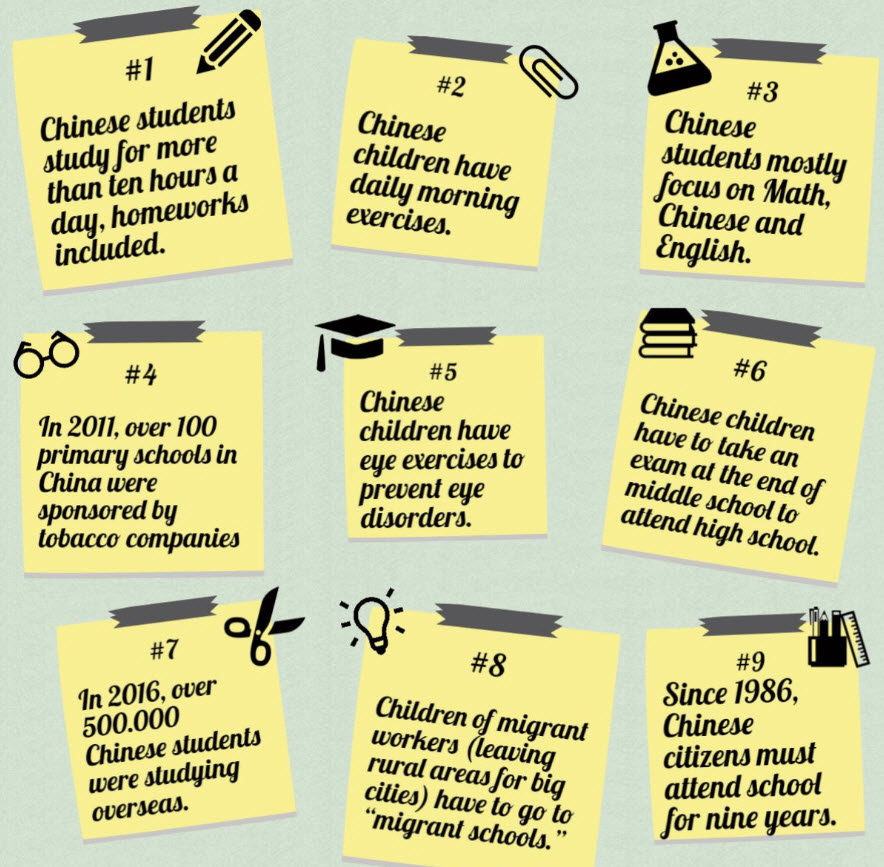
Violence.
Low crime, no religious nonsense or Islamic violence. Companies can invest safely without fear of religious unrest, violence or robbery.
In China it is against the law to promote “progressive” change.

In China it is against the law to have any kind of social upheaval. It is also (functionally) against the law to have a lifestyle outside of the traditional conservative Chinese family. If you try to do so, for what ever reason, you risk being arrested and spending the rest of your life in a re-education camp, if not killed outright.
The Chinese do not mess around. Know your history.

Faith in the future.
Faith in the future, nationalism, a belief in building a better China: the Chinese have a strong belief in the future and willingly sacrifice time and effort for the next generation.

The Chinese are feeling as we did in the 60s, except that their wages and wealth have doubled every decade for seventy years.
Their Market.
There are twice as many people in China than in the US and Europe combined and domestic consumption of China is growing 7% annually thanks to 200 million rural people moving into new cities.
China will have abundant low salary workers in its western provinces for the next 15 years.
Chinese companies are flexible beyond imagination. They can change products, management, focus or whatever literally overnight.
The Chinese are incredibly flexible and their culture has already outlived the Egyptians, the Greeks and the Romans. Western companies are hierarchically organized whereas in Chinese companies decisions are made fast, often on the phone.
Politics.
China is the world’s leading democracy. It’s called “Communist” as a hold-over from the Mr. Mao days, but that time is long, long past. China holds on to the idea that it is “communist” in the same way that Americans still call America a “Republic”. Both have evolved far, far away from their initial charter.
Here is why China is a democracy. You need to study the indicators that define governance of a nation…
In 2005, The Carter Center began transferring America’s democracy knowhow to China. Today, China’s democracy is bigger, faster, safer and cheaper than ours and runs entirely on Chinese intellectual property. There’s a potentially huge market for an improved version. Might Chinese democracy displace America’s? Should we be surprised if the Chinese model becomes competitive? For three thousand years no subject has preoccupied their elite more than governance. From their perspective, Deng’s 1977 comment about Western democracy, “It’s too soon to tell,” was simple common sense. Barely forty years later, perhaps we can tell. Only twenty percent of citizens in newly-democratic Hungary, Czech Republic, Romania, Latvia, Poland and Bulgaria, trust their governments. Even fewer Britons trust Parliament and less than ten percent of us trust Congress. Western democracy is losing legitimacy because governments’ agenda have remained at odds with their citizens’ agenda for decades but, as Margaret Thatcher would have said, there was no alternative. - Selling Democracy to China
Now there is an alternative and, if we compare American democracy to China’s on seven axes we can at least begin the conversation.
- Constitutional
- Elective
- Popular
- Procedural
- Operational
- Substantive
- Financial
Let’s talk about them a spell.
Constitutionally, China’s constitution stipulates,
“The State organs of the People’s Republic of China apply the principle of democratic centralism. The National People’s Congress and the local people’s congresses at various levels are constituted through democratic elections. They are responsible to the people and subject to their supervision. All administrative, judicial and procuratorial organs of the State are created by the people’s congresses to which they are responsible and by which they are supervised”.
America’s founders carefully omitted the word ‘democracy’ from all Constitutional documents. As it was initially founded as a Republic. But the 12th and the 17th amendments changed it into a democracy. Thus paving the way for Wilson, FDR, Clinton and Obama to turn America into a medieval-style serfdom functioning as an oligarchy.

At least the Chinese constitution clearly says that it is a democracy.
Electively, China’s bigger, more transparent elections were designed and supervised by The Carter Center which continues to expand the franchise at the behest of Premier Wen Jiabao, who told them in 2012,
“The experience of many villages shows farmers can succeed in directly electing village committees. If people can manage a village well they can manage a township and a county. We must encourage people to experiment boldly and test democracy in practice”.
Today, 3,200 democratically elected Congressional representatives must vote, almost unanimously, to approve all senior appointments and all legislation.
In the U.S., wealthy, unelected people propose and fund candidates for election. An unelected Electoral College chooses the chief executive.
Popularly, the Chinese, who still bear scars of recent governance mistakes, will tell you that it was when Mao, Deng and the Qing Emperor ignored experts that they got the country into trouble.
Today, Chinese democracy resembles Proctor and Gamble more than Pericles.
There are more than a thousand polling firms in China and its government spends prolifically on surveys, as author Jeff J. Brown says,
“My Beijing neighborhood committee and town hall are constantly putting up announcements, inviting groups of people–renters, homeowners, over seventies, women under forty, those with or without medical insurance, retirees–to answer surveys. The CPC is the world’s biggest pollster for a reason: China’s democratic ‘dictatorship of the people’ is highly engaged at the day-to-day, citizen-on-the-street level. I know, because I live in a middle class Chinese community and I question them all the time. I find their government much more responsive and democratic than the dog-and-pony shows back home, and I mean that seriously”.
Even the imperious Mao would remind colleagues,
“If we don’t investigate public opinion we have no right to voice our own opinion. Public opinion is our guideline for action,”
which is why Five Year Plans are the results of intensive polling. Citizens’ sixty-two percent voter participation suggests that they think their votes count. Princeton’s Gilens and Page, on the other hand, examining the causes of Americans’ fifty-two percent voter participation, found
‘the preferences of the average American appear to have a near-zero, statistically non-significant impact upon public policy’.
Procedurally, The Chinese engineers, economists, statisticians and sociologists who develop policies practice democracy among themselves and the top seven decision makers–appointed independently of each other and with a collective 200 years governing experience–require at least six votes to send legislation to Congress.
If President Xi claimed that global warming is a hoax he would be regarded as autocratic, not democratic.
If he wants a new climate policy and persuades five colleagues to support it, he can push it into the trials pipeline but, without solid trial data, he can’t propose legislation and the popularly elected, unpaid congress has proven willing to delay leaders’ pet projects for decades.
Data-driven democracy has steadily narrowed the gap between public expectations and government capacity, which is why Chinese support for government policies stands at 96 percent, higher than even Switzerland’s or Singapore’s and far higher than our twenty percent.
Operationally, American presidents resemble the medieval monarchs upon whom their office was modeled, as Abraham Lincoln’s Secretary of State, William Henry Seward, observed,
“We elect a king for four years and give him absolute power within certain limits which, after all, he can interpret for himself”.
Our presidents hire and fire all senior officials, secretly ban fifty thousand citizens from flying, order people kidnapped, tortured, imprisoned and assassinated and take the country to war.
No Chinese leader, not even Mao at his peak, could do any of those things.
The president cannot even choose his prime minister (always his strongest rival for the presidency), can only make decisions with 6–1 or 7–0 support from colleagues and can’t hire or fire officials, elect, assign or suspend members of Congress.
President Obama’s healthcare initiative relied on his popularity and promises whereas, as Stanford VC Robin Daverman explains, China’s initiatives rely on math:
“China is a giant trial portfolio with millions of trials going on everywhere. Today, innovations in everything from healthcare to poverty reduction, education, energy, trade and transportation are being trialled in different communities. Every one of China’s 662 cities is experimenting: Shanghai with free trade zones, Guizhou with poverty reduction, twenty-three cities with education reforms, Northeastern provinces with SOE reform: pilot schools, pilot cities, pilot hospitals, pilot markets, pilot everything. Mayors and governors, the Primary Investigators, share their ‘lab results’ at the Central Party School and publish them in ‘scientific journals,’ the State-owned newspapers. Major policies undergo ‘clinical trials,’ beginning in small towns that generate and analyze test data. If the stats look good, they’ll add test sites and do long-term follow-ups. They test and tweak for 10-30 years then ask the 3,000-member People’s Congress to review the data and authorize national trials in three major provinces. If a national trial is successful the State Council [China’s Brains Trust] polishes the plan and takes it back to the 3,000 Congresspeople for a final vote. It’s very transparent and, if you have good data and I don’t, your bill gets passed and mine doesn’t. People’s Congress votes are nearly unanimous because the legislation is backed by reams of data. This allows China to accomplish a great deal in a short time: your winning solution will be quickly propagated throughout the country, you’ll be a front page hero and you’ll be invited to high-level meetings in Beijing and promoted. As you can imagine, the competition to find solutions is intense”.
Operationally, data-driven legislation wins hands down.
China is doing this right. America is just running around in circles playing games (politics) and servicing the millions of leeches that live off the system. No wonder nothing can be completed in the USA.

Substantively, China has won her battle for survival and is now militarily and economically impregnable, so authoritarian giants like Mao and Deng are no longer needed.
Today, researchers, experts, media, academics, stakeholders and obstreperous citizens set the agenda.
Since 2000, China has allowed foreigners to conduct surveys and publish apolitical results without submitting their questionnaires and Harvard’s Tony Saich, who’s been polling there for over a decade reports, in Governing China, that ninety-six per cent of Chinese are satisfied with their national government and, according to Edelman’s 2016 Report, almost ninety percent of Chinese trust it.
World Values Surveys found that eighty-three percent say China is run for their benefit rather than for the benefit of special groups–compared to thirty-eight percent of Americans.
Financially (we exclude financial democracy from polite conversation but the Chinese don’t), ninety-five percent of poor Chinese own their homes and land and the Chinese own, in common, the commanding heights of their economy– banks, insurers and utilities.
And Inequality is being effectively addressed.
In its 2017 study, Global Inequality Dynamics, America’s National Bureau of Economic Research reports that, though the bottom half of Chinese saw their share of national income fall from twenty-seven percent to fifteen percent after 1980, Americans’ share collapsed from twenty percent to twelve percent.
Simultaneously, China’s top one percent captured thirteen percent of all personal income, but America’s elite grabbed twenty percent.
Since those figures were compiled, China has eliminated urban poverty and, the World Bank adds,
“We can reasonably expect the virtual elimination of extreme poverty in [rural] China by 2022”.
Every Chinese–not just the poor–has doubled her income every ten years for the past 40 years, an extraordinary improvement in income mobility and the inverse of our experience.
In the U.S., says Stanford’s Raj Chetty,
“rates of absolute mobility have fallen from approximately 90% for children born in 1940 to 50% for children born in the 1980s. Absolute income mobility has fallen across the entire income distribution, with the largest declines for families in the middle class”.
Whether or not we’re willing to call China’s 20th century system democratic, it’s clear that they’ve improved on our quaint, eighteenth century model.
How long before they start selling the new, improved version of democracy? Yes, the Chiense version of democracy is light-years vastly improved over that clunky oligarchy model that exists in Washington, D.C..
Though this claim enrages many Westerners, regardless of the metric employed, electively, popularly, procedurally, operationally, substantively, financially, and technologically,
Each of four theoretical traditions in the study of American politics—which can be characterized as theories of Majoritarian Electoral Democracy, Economic-Elite Domination, and two types of interest-group pluralism, Majoritarian Pluralism and Biased Pluralism—offers different predictions about which sets of actors have how much influence over public policy: average citizens; economic elites; and organized interest groups, mass-based or business-oriented. A great deal of empirical research speaks to the policy influence of one or another set of actors, but until recently it has not been possible to test these contrasting theoretical predictions against each other within a single statistical model. We report on an effort to do so, using a unique data set that includes measures of the key variables for 1,779 policy issues. - Testing Theories of American Politics: Elites, Interest Groups, and Average Citizens
China is a thriving democracy and America is not.
Defense.
To understand China and how they view defense, you should understand their history. They have over 5000 years on nearly continuous warfare. They have evolved within this reality.
The PLA fields some of the most modern weapon systems in the world at half the cost of America’s defense budget.
Its more modern missiles out-range ours in every weight and class thanks to the tight coupling between their world leading chemists and rocket propellent manufacturers.
Russian weapons systems fill any gaps.
Morale.
A highly cohesive society, the Chinese, by a full 95% support their government’s policies and most are willing to fight for their country. They are fiercely patriotic. No matter what the Western media might say otherwise.
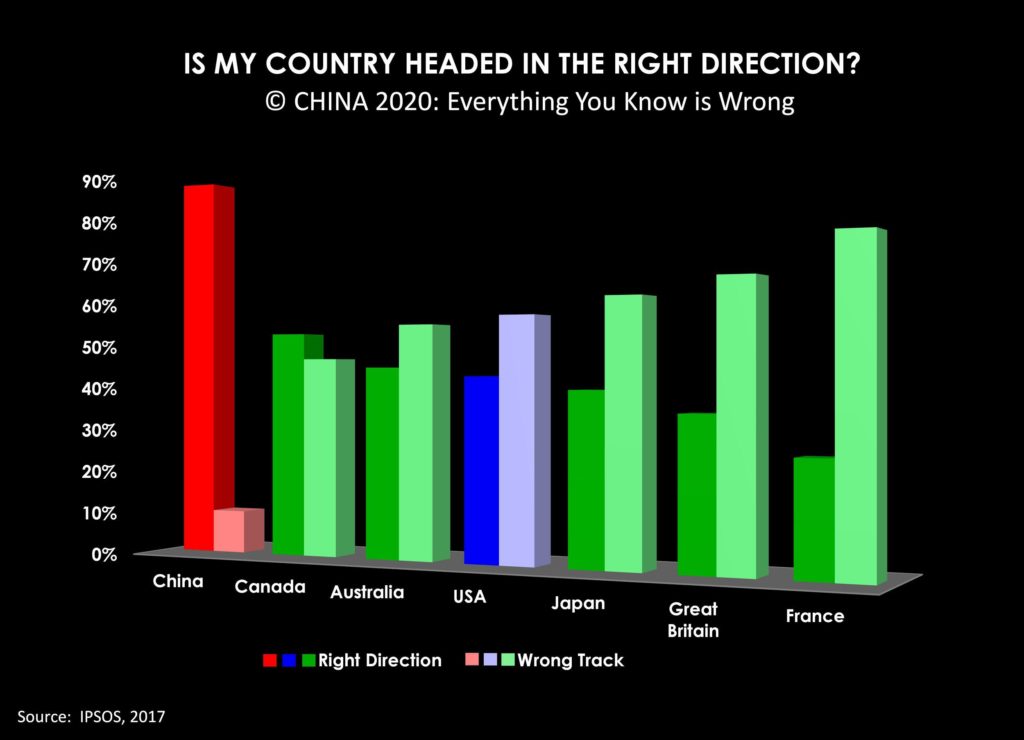
The Future.
By 2025, nine provinces will enjoy higher average incomes than the US. By 2040, all will.
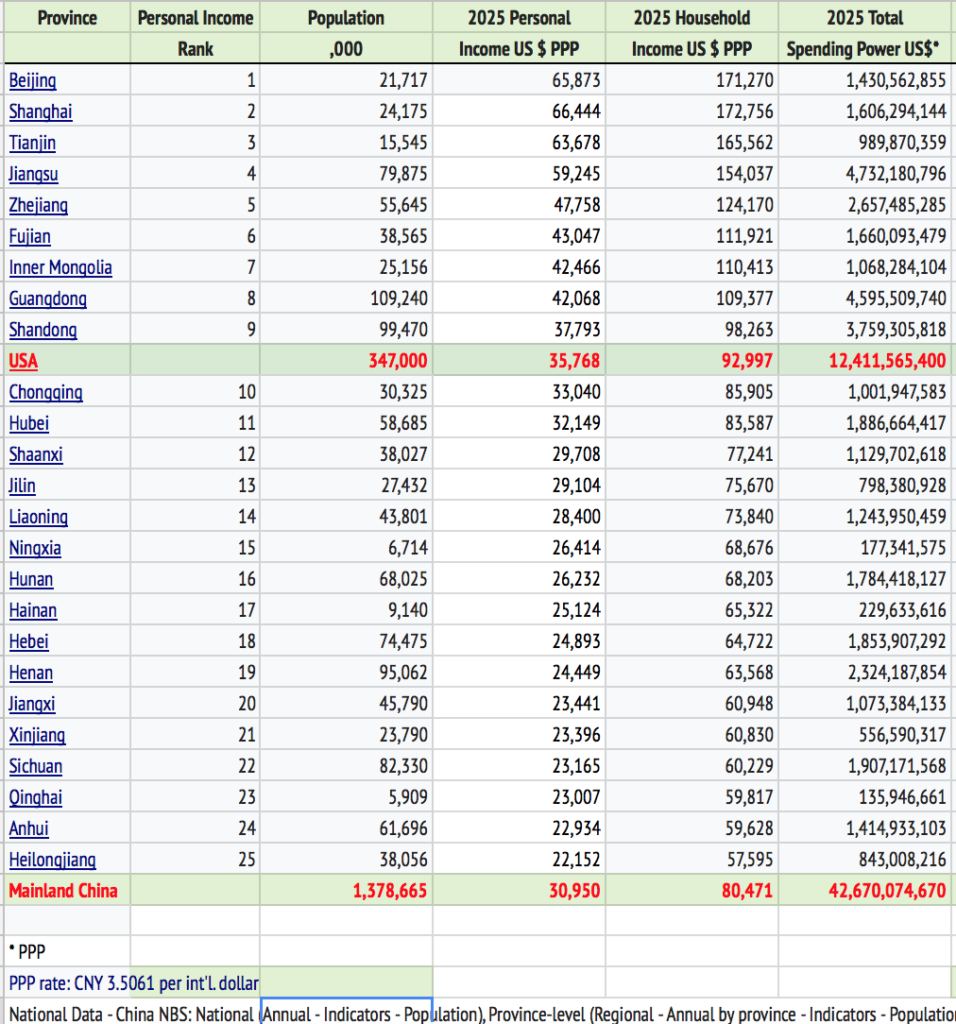
Conclusion
As large and great as America was, it is now in decline, and the Chinese nation is on the rise. Every indicator, on just about every level, confirms this. It is a fools errand to ignore this fact and to try to stymie this natural progression of the human species.
The smart and intelligent will recognize this and try to personally profit from this growth.
Links about China
Here are some links about my observations on China. I think that you, the reader, might find them to be of interest. Please kindly enjoy.

































China and America Comparisons
As an American, I cannot help but compare what my life was in the United States with what it is like living in China. Here we discuss that.















The Chinese Business KTV Experience
This is the real deal. Forget about all that nonsense that you find in the British tabloids and an occasional write up in the American liberal press. This is the reality. Read or not.




















Learning About China
Who doesn’t like to look at pretty girls? Ugly girls? Here we discuss what China is like by looking at videos of pretty girls doing things in China.





Contemporaneous Chinese Music
This is a series of posts that discuss contemporaneous popular music in China. It is a wide ranging and broad spectrum of travel, and at that, all that I am able to provide is the flimsiest of overviews. However, this series of posts should serve as a great starting place for investigation and enjoyment.



















Parks in China
The parks in China are very unique. They are enormous and tend to be very mountainous. Here we take a look at this most interesting of subjects.









Really Strange China
Here are some posts that discuss a number of things about China that might seem odd, or strange to Westerners. Some of the things are everyday events, while others are just representative of the differences in culture.














What is China like?
The purpose of this post is to illustrate that the rest of the world, outside of America, has moved on with their lives. That while they might not be as great as America is, they are doing just fine thank you.
And while America has been squandering it’s money, decimating it’s resources, and just being cavalier with it’s military, the rest of the world has done the opposite. They have husbanded their day to day fortunes, and you can see this in their day-to-day lives.









Summer in Asia
Let’s take a moment to explore Asia. That includes China, but also includes such places as Vietnam, Thailand, Japan and others…












Some Fun Videos
Here’s a collection of some fun videos taken all over Asia. While there are many videos taken in China, we also have some taken in Thailand, Vietnam, Cambodia, Korea and Japan as well. It’s all in fun.

















Articles & Links
You’ll not find any big banners or popups here talking about cookies and privacy notices. There are no ads on this site (aside from the hosting ads – a necessary evil). Functionally and fundamentally, I just don’t make money off of this blog. It is NOT monetized. Finally, I don’t track you because I just don’t care to.
- You can start reading the articles sequentially by going HERE.
- You can visit the Index Page HERE to explore by article subject.
- You can also ask the author some questions. You can go HERE to find out how to go about this.
- You can find out more about the author HERE.
- If you have concerns or complaints, you can go HERE.
- If you want to make a donation, you can go HERE.

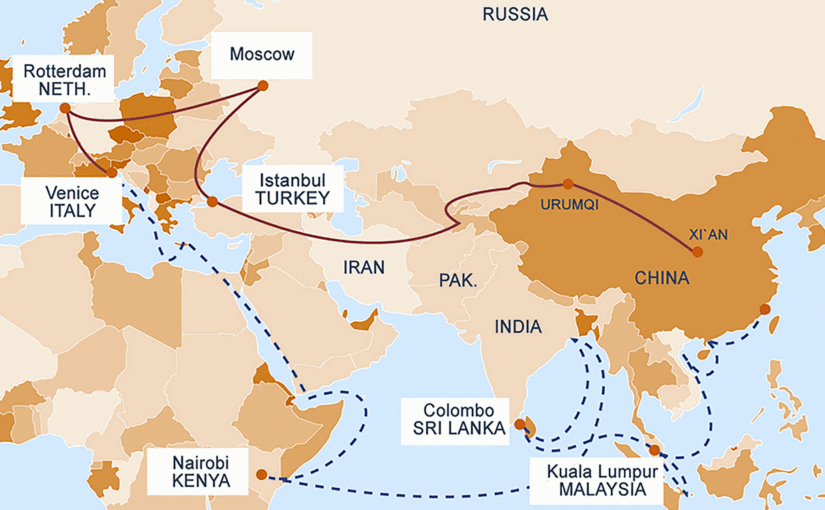

A good lengthy read.
Thank you for that.
One point that I want and NEED to make is something that everyone is missing.
Why are all these lethal viral attacks on Chinese livestock and Chinese people? Why not dogs, cats, birds, sparrows, horses, donkeys, snakes, frogs, and all the many, many thousands of creatures that interact with Chinese people? Why are ONLY livestock and people affected by new viral outbreaks?
Hum?
Hi-I really enjoy your blog. I really do. and I love to have someone tell me the other side of the coin in China vs western world view. But you are so 150% positive on every little thing chine related, it seems you are more chinese than the chinese themselves! LOL 🙂 It creates a “? “in my head. There are always good things and not so good things about any place. And I just dont like the fact that china seems to be extremely authoritarian, however good the intention might be, from what I read in your blog at least. Dont get me wrong I really think China is an exciting place to be and we even started thinking if we should move there with the family, based on what I read in your blog (PS do you give consultation? :)). Its just this “everything is amazing & flawless” in China lens which I dont get exactly. Maybe I didnt read enough. Reading things like, if you do this or that you might get into life long prison or even get killed etc. I have lived in strict countries like Singapore and Dubai and I dont have a problem with this, actually I like it as you dont get many of the bad stuff from the western world, like drug addicts, drunken people fighthing and attacking people, children getting kidnapped etc….so I get that point, how positive this can be if you have a government looking out for the country.
But why are you so extreme positive, actively defending China like there is no tomorrow? 😀 Maybe its me, because I think in terms of Earth, and I am existing here. I go where I feel comfortable, and get the most benefits for me and my family. Thats why it creates a ? for me, to hear an American being so pro China.
Hm I think, you seem to be very defensive. as if you are trying to changed peoples mind (americans) because they are so brainwashed on China?
I am not a US person. I have lived across the world, maybe thats why.
Maybe you shouldnt care about what US people think about you or China?? 😀
Just wanted to raise this to you as it keeps bothering me for some reason 🙂
Sorry for lengthy post.
Kindly, Berkant
The comparisons between contemporaneous America today, and China are stark. They are black and white. It’s nearly IMPOSSIBLE not to praise things when they are done right. Sure, China has problems. But with the onslaught of negativity from the American “news’ I have no desire to add to that narrative. You want some complaints? Here’s some (for the purposes of balance)…
I have to use an APP to buy anything. Sure it’s easy, you just scan the QR. But good golly, what if you don’t have a cell phone? What if you don’t want to carry one? Then you are in big trouble. Everything seems to be moving head-forth into the digital age with little grasp that maybe people want to hand paper money, and coins.
Here’s another.
It’s difficult to get cheese in China. And when you do, you end up paying American-prices. Yikes! Eating cheese, and pizzas, and cheeseburgers is an important aspect of what being an American is. But instead I have to accept snails, sea fish, and dumplings. I do miss a good gooey cheese pizza.
Here’s another.
What if I got in trouble? I cannot hire an attorney to “negotiate” my sentence. There is no connection between the punishment of a crime and my bank account. It’s good to know that if I were wealthy, I could have an “out” if I got into trouble. But not in China. If I commit a crime here, I’m FUCKED!
Here’s another…
What about diversity? Certainly the oppressed and the minorities must be given their due. But in China, the color of one’s skin, and their history has no bearing on their grades, or their performance. If you can run 300 meters in under five minutes you are given a grade and a rating in comparison with your peers. That is actually unfair for those that have disabilities. It’s not really objectively fair.
So, yeah. If you want you read negative stuff about China don’t go here. You can just read CNN, FOX, or Alex Jones. They NEVER say anything good about China. Anyways, read what I experienced inside of America to get a full appreciation of my point of view. My experience inside of America was on the bad side of “harsh”, and I have every God-damn right to be angry about it. Now, not everyone has had my experiences. They have lived calm and safe lives. Paid-for education, immediate huge salaries right out of school, and a blessed life without any encounters like I experienced. If that describes you, then you would accurately and expectedly recoil in horror with my point of view.
But I tell everyone, don’t believe me. Come to China yourself and see the difference first hand. Then YOU come to your conclusions yourself.
You want me to say some bad things about Chinese education? Ok. I see kids at 9 years old studying calculus on the tables on the street while their parents drink beer and eat BBQ.
You want me to say some bad things about China work? Ok. The Chinese work a six day week, but get two months off paid vacation at the end of the year. Maybe they should only work a five day week and get seven days vacation instead. You know, like the USA.
You want me to say bad things about Chinese lifestyle? Ok. They spend too much time outside of the home interacting with friend and family. They should spend more time inside the home and be better connected to media, social media and the internet. They are paying for it after all.
What about the stockholders of companies? They are being cheated when the company hands out one and two months bonuses to all the employees at the end of the year.
What about the right to live a “free” life where you don’t have to wear a mask. In China if the government tells you to wear a mask you wear it. Individual freedom is not accepted, tolerated or permitted.
What about the right to bear arms? Not so in China. You need to get a permit, and you need to be trained to handle the firearm. (Though all students age 14 get this training by virtue of being a Chinese student.)
What about the … Yeah, I could go on and on. There are difference and problems and good things. But the narrative out of the West is so absolutely full of hate, outright lies, and distortions that I refuse to be a part of it… unless the State Department pays me… then I’ll consider it. You know I could run a pretty nice cottage-industry regurgitating the anti-China narrative. I mean… in the millions of dollars. All for me, yours truly. I could do that, don’t you know. LOL.
Thank you. I am always impressed how patient you are with your readers.
By the way, I dont want to read negative stuff about china or anti-china, you got me wrong. Just more balanced. CNN/NBC coverage is waste of time as its distorted or outright lies, as you know better than me.
For example I loved living in Singapore, and I still miss it a lot. but weather with 90% humidity is a challenge, never getting a small chilly breeze. Or rents are crazy high, or were at least, making life difficult if you don’t earn very well. You cant move to the country side where its cheaper as there is none 🙂 Only to Malaysia near the border maybe.
Cheese, Milk prices seem to be a general issue in Asia. I remember paying 10$ for a small piece of generic mozzarella cheese in Singapore! 🙂
Thank you, please continue sharing. Your content is much appreciated!
Thank you for that. You know, it took me some time to get used to the humidity here in Southern China. And I used to live in Louisiana, and Mississippi! But after a while, you just appreciate what you have, and those fragrant smells are just lovely in the spring. I’ve even developed a taste for duran fruit. How about that? I have to tell you that Summers here on the South China Sea are a three-pair-underwear a day situation. In fact, if you aren’t taking proper precautions you’ll end up with real “crotch rot” if you are not careful.
I think that everything has it’s pluses and minuses. My experiences in Australia for instance have been largely positive and great. But if I were to say something bad about the place it would be that Christmas just didn’t seem right at all. I mean, shrimp on the beach with the sun shining. And Santa Claus wearing shorts. Seems odd to me.